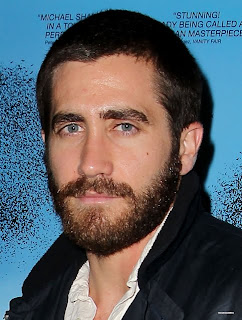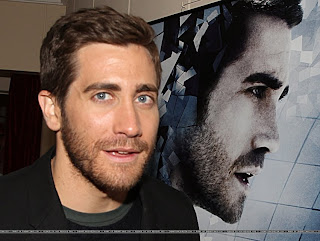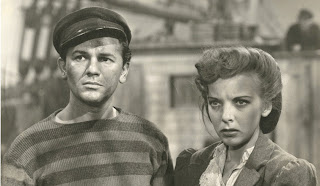Critics’ Picks: ‘Detour’: A.O. Scott reviews the low-budget 1945 film noir “Detour” directed by Edgar G. Ulmer, starring Ann Savage and Tom Neal
Source: video.nytimes.com
"The typical tramp resurfaces in the 1940s as an iconoclastic anti-hero; he is an embittered drifter whose comic potential has been rewritten and recast in the more tragic, self-destructive personae of John Garfield (The Postman Always Rings Twice, 1946) and Tom Neal (Detour, 1945).

Claudia Drake and Tom Neal as Sue and Al in "Detour" (1945) directed by Edgar G. Ulmer

John Garfield and Lana Turner as Frank Chambers and Cora Smith in "The Postman Always Rings Twice" (1946)

The source of this transformation of the forward-looking, romantic persona of the tramp into a reflective, resentful outcast is a phenomenon known as film noir.

"Film noir" remains a somewhat contested concept. Everyone agrees as to its literal meaning, which is "black film." But film historians disagree as to its status as a cinematic phenomenon.

Critics such as James Damico and Foster Hirsch consider it a genre with conventional plots involving murder, crime, and detection, and character types such as hard-boiled heroes and femmes fatales. Raymond Durgnat and Robert Porfirio map film noir into a family tree of thematic concerns, including sexual pathology (the Clytemnestra plot), psychopathic behavior, alienation and loneliness, existential choice, meaninglessness, purposelessness, the absurd, infernal urban landscapes, and other "unhealthy" subjects.

As Borde and Chaumeton suggest, film noir deliberately violates orientations, expectations, and conventions in order to produce "a specific malaise" in the viewer.
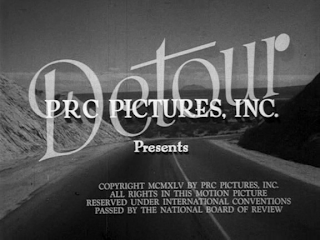
Detour's credit sequence consists of a reverse tracking shot of an empty desert highway that rapidly recedes from the camera (mounted on the rear end of a car). This sequence succinctly characterizes noir's inversion of the traditional iconography of the road and reverses the meaning of that iconography: in Detour the road lies behind us, not in front of us; the road is associated with a past that is being fled rather than with a present or a future to which the film and/or the film's characters look forward. The credit sequence reveals a space that closes off rather than opens up possibilities.

Detour and Postman rely on a flashback structure employing voice-over narration. Like most flashbacks, the flashback narration in these two films is, like the films' roads, "closed." It does not go forward but backward. But the tone of the narrations differs.

The first-person commentary of the central characters possesses none of the authority or omniscience associated with more "classical" or traditional flashbacks.

However, in Detour, the narration is not narrativized. It is "set" in a diner in Nevada, but it is addressed to an undramatized figure (the viewer) and is told mentally rather than verbally; that is, Roberts "thinks" the narration but does not speak it out loud.

More dramatically, in Postman the audience knows neither to whom the hero is speaking the narration nor from where that voice comes (until the last scene, if then). We do not see Garfield telling the story and can only presume that it is being told, under sentence of death, from his prison cell at the end of the film.
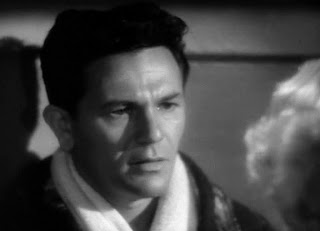
The narration of Postman is peppered with Garfield's "guesses" and plagued with self-doubt and hesitation.

Caught up in the heroine's and his own confused desires and intents, he doesn't exactly know what happened or why. His narration does not serve the function of clarification or explanation but more that of a murky self-justification.

In Detour, the narration is similarly driven by a compulsion to justify what has happened in terms of outdated, pre-Christian notions of destiny and fate. As explanation, the hero's commentary fails to convince — a problem of which even the hero seems quite aware. Most importantly, in film noir the narration is regularly limited to the constricted consciousness of an untrustworthy narrator".
Source: www.brightlightsfilm.com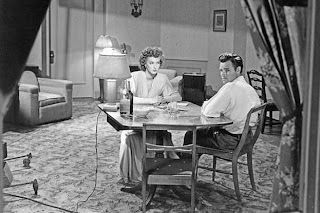
One of the oddest stories surrounding "Detour"'s transition to screen involves actor John Garfield, who reportedly urged Warner Brothers to acquire the property for him (with Ida Lupino playing Vera, and Ann Sheridan as Al's N.Y. girlfriend Sue).

Ann Sheridan and John Garfield as Kay Manners and Tommy Gordon in "Castle on the Hudson" (1940) directed by Anatole Litvak

Ida Lupino and John Garfield as Stella Goodwin and Harold Goff in "Out of the Fog (1941) directed by Anatole Litvak
Warner offered PRC's president (and "Detour" credited producer) Leon Fromkess $25.000 for the rights, but Fromkess declined -he was taken aback with Ann Savage and he immediately offered her a five-year contract.
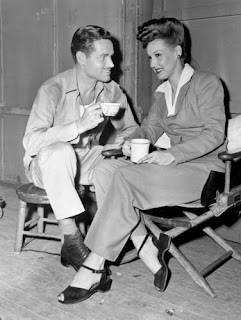
Ann Savage and Tom Neal made three movies together at Columbia Pictures before filming "Detour". PRC re-teamed them for "Detour" to exploit the publicity and press buildup they had been given in 1943 and 1944.

-"Savage detours: the life and work of Ann Savage" by Lisa Morton, Kent Adamson, Guy Maddin (2009)

While setting up to film a hitchhiking scene, a passing car tried to pick up Ann Savage (made up to look dirty and disheveled), causing laughter in the rest of the crew.

German filmmaker Wim Wenders called Ann Savage's performance as Vera "30 years ahead of it's time".





 Jake Gyllenhaal out with niece Ramona in New York City on 12th November 2011
Jake Gyllenhaal out with niece Ramona in New York City on 12th November 2011
 Maggie and Peter attended the opening of the Armani Hotel in Milan on Thursday, 10th November 2011.
Maggie and Peter attended the opening of the Armani Hotel in Milan on Thursday, 10th November 2011.